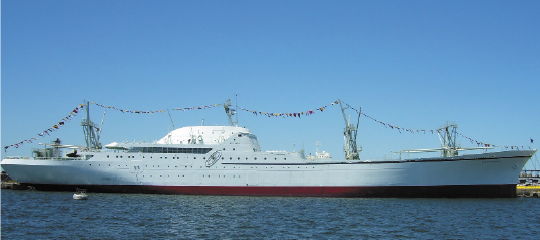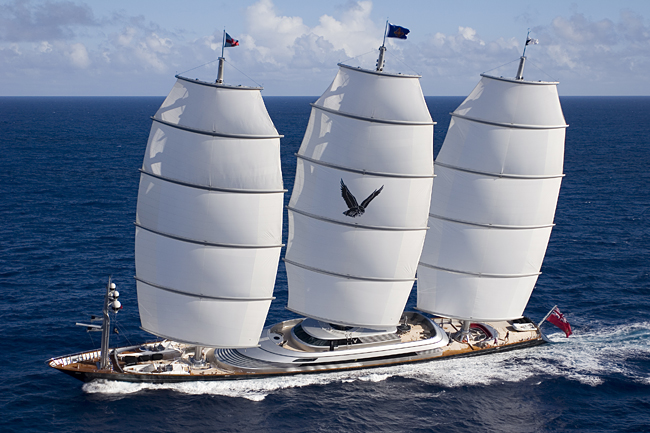Nuclear power fan-death phobia


23 Years Later: Twenty-three years after President Lyndon Johnson got the message, it was still news for the majority of the Senate when the director of the NASA Goddard Institute for Space Studies, Dr James Hansen, testified in 1988. image National Aeronautics and Space Administration
It will shortly be four years shy of half a century. In November 1965, the United States president’s science advisory committee warned:
Carbon dioxide is being added to the earth’s atmosphere by the burning of coal, oil and natural gas at the rate of 6 billion tons a year. By the year 2000 there will be about 25% more CO2 in our atmosphere than at present. This will modify the heat balance of the atmosphere to such an extent that marked changes in climate, not controllable through local or even national efforts, could occur.
Carbon dioxide has been sampled at Mauna Loa since 1958—the Keeling Curve. The latest figure published, July 2011, is 392.39 parts per million. At 22.09% more than for July 1965, this is clearly less than the science advisory committee forecast. But while the committee might have slightly overestimated, it is now known from the paleoclimate record that climate is far more sensitive to the carbon dioxide level than was calculated to be the case 46 years ago.
Twenty-three years ago, and 23 years after President Lyndon Johnson stated he was ‘pleased at the thoroughness with which the panel has investigated pollution’, Dr James Hansen testified to Congress that:
Number one, the Earth is warmer in 1988 than at any time in the history of instrumental measurements. Number two, global warming is now large enough that we can ascribe with a high degree of confidence a cause and effect relationship to the greenhouse effect. And number three, our computer climate simulations indicate that the greenhouse effect is already large enough to begin to affect the probability of extreme events such as summer heat waves.

23 Years On: Twenty-three years after testifying before the Senate, Dr James Hansen is arrested attempting to convince the ninth United States president aware of global warming of the need for action, rather than more green-wash. image International Business Times
Thanks to the work of Dr Hansen and earlier scientists, Barack Obama will be the ninth president in succession to be fully briefed about global warming, although George W Bush’s awareness, like nearly half the populace yet, extended only to the warming and not to the principal, anthropogenic, cause of. George the Lesser couldn’t even bring himself to use the c-word without heavy qualification:
Oh, I think conservation has got to be an integral part of making sure we’ve got a reasonable energy policy. But what the Vice President was saying is, we can’t conserve our way to energy independence, nor can we conserve our way to having enough energy available. So we’ve got to do both. We must conserve, but we’ve also got to find new sources of energy.
When Dr Hansen was arrested outside the White House on Monday, his frustration with the presidents he has directly or indirectly advised, beginning with George Bush the Elder, was manifest:
If Obama chooses the dirty needle it will confirm that the President was just green-washing all along, like the other well-oiled coal-fired politicians, with no real intention of solving the addiction.
To cross the Canada – United States border, the proposed tar sands pipeline Dr Hansen is protesting first needs a presidential permit from Barack Obama. If he signs that permit, his earlier rhetoric will indeed have proved to be empty. Dr Hansen specifically warns against the extraction of unconventional oil, because the known reserves are sufficient and its carbon dioxide emissions so great, along with coal, to give the planet a Venus-like atmosphere. If that transpired, it is improbable that life would get a second chance to evolve before the sun burns too hot for life on Earth, regardless of what mankind does to destroy or recover the planet’s atmosphere. While not originally a fan of nuclear power, Dr Hansen, as perhaps the world’s leading climate scientist, is now strongly supportive, particularly of fourth-generation technology.

Fit for Service: The only practicable, non-carbon-dioxide-emitting means of transporting 2.5 million visitors to and from Aotearoa’s ‘100% pure’ shores annually, is nuclear-powered. image Atomic Insights
With 1252 arrested to date, it would be fascinating to know what heed President Obama is taking of his energy secretary, Nobel Prize winner Dr Steven Chu. In public, Dr Chu uses sympathetic language:
It’s certainly true that having Canada as a supplier for our oil is much more comforting than to have other countries supply our oil.
This, of course, reflects the awful predicament successive presidents have been placed by the inadequate actions of their predecessors, in respect to the United States’ addiction to oil.
The United States would not be in its current fix of feeling forced to use a fossil fuel with a more than 80% higher carbon dioxide impact, tar sands, was it not for its manifestation of the bizarre South Korean concept of electric fan death. The United States was poised to become about as low a carbon dioxide emitter as France. But a stuck valve and the release of radioactive material from the Three Mile Island Nuclear Generating Station changed all that. Because while the release has been estimated to have caused a total of between one and two additional fatalities from cancer in the exposed population, the reaction of the populace was that nuclear power was unacceptably dangerous. Never mind that radioactively exposure from coal-fired plants is 100 times greater than from nuclear, nuclear power was the fiend to be feared.
It is difficult to not be entertained by the quaint notion of electric fan death, whereby a sleeping person is believed to be in mortal danger if left in a closed room with the oxygen-devouring fiends. But the phobia about nuclear radiation is every bit as irrational—about as rational as a tobacco-smoking organic foods enthusiast.

Immaculate: Conceived as a prototype for a latter-day clipper, the Maltese Falcon is not about to challenge the stranglehold of oil-powered passenger transport, except for those who can also afford suborbital space travel. At close to US$300 million, Tom Perkins’ pride and joy cost him more than half as much as a full-sized cruise ship capable of accommodating 3000 crew and passengers—this large yacht, maybe 30. image Wind Power Authority
Before the Three Mile Island accident indirectly put the brakes on it, important advances were being made with fourth-generation nuclear power. Tragically, the Clinton–Gore administration, to the vice-president’s eternal discredit, scrapped the Argonne National Laboratory’s successful fourth-generation programme, to appease anti-nuclear Democrats. And in place of the United States, China is now standard-bearer for this unprecedentedly safe and clean technology.
Without recourse to nuclear, Aotearoa can almost certainly create a 100% clean electricity grid, such is the range of options including its strong suit hydro, and abundant geothermal. Even so, a thorium-powered reactor would be a far greener look across the Waikato River than is the fossil-fueled Huntley Power Station, compounded by much of that fossil fuel being imported. For those excessively squeamish about uranium, thorium has much appeal, including being non-fissile. Again, the technology was pioneered by the United States, and again China now leads the way.
Leaving aside electricity generation, the only way Aotearoa can function as a genuinely ‘100% pure’ destination for the great number of the 2.5 million visitors who fly in annually—half from the Northern Hemisphere—is if the means of transport is non-carbon-dioxide-emitting. And the only fit-for-service means of transporting those numbers across oceans is the nuclear-powered ship. Because aside from the unsurprising fact that an ocean liner uses less than half the energy per passenger kilometre than that used by an airliner, the latter’s carbon dioxide is more harmful, because of the altitude that it is emitted. A clue to the intractability of the air transport emissions problem is contained by the statement of the chief executive officer of Ryanair, Michael O’Leary:
The best thing we can do with environmentalists is shoot them.
Or, presumably, force ’em to sleep in a closed room with the fan on.
